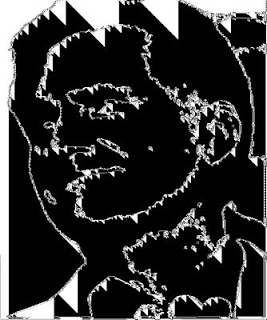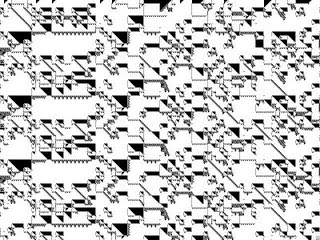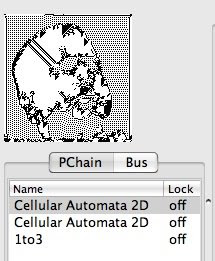
Studio Artist’s MSG (modular synthesized graphics) has some new cellular automata processors. What’s especially interesting about these is that you can configure them to create representation imagery as well as the flat fractal texture fields you would typically see for this kind of imagery. The mathematics behind cellular automata are particularly fascinating because they create the same kinds of fractal patterning seen in nature, like the patterning on a seashell for example.

Stephen Wolfram popularized the mathematics behind cellular automata and has postulated that the patterns we see in nature are in fact created using the same kinds of underlying math principals in the underlying physics or biology of these systems. Here’s an example of a flat texture field created using MSG with a sea shell like patterning.

Of course the great thing about MSG is that you are free to combine different MSG processors together to create more complicated effects. The output of one processor can be used to modulate another. The trick for creating representational cellular automata imagery is to modulate one of the 2D cellular automata generators using something like the source image luminance. Here’s an example of a simple MSG preset created in Studio Artist’s new MSG advanced editor with 3 different processors. The source image green channel is used as the input source for the 2D cellular automata generator. The output of that generator is then used as the input for another 2D cellular automata generator.

Of course what’s great about MSG is that you can then evolve and mutate your starting preset to create new ones automatically. So the same underlying processor chain can lead to many different effects styles as the various editable parameters associated with each processor are mutated over time.

Representational Cellular Automata in MSG
You are here:
- Home
- MSG Evolver
- Representational Cellular Automata in MSG







